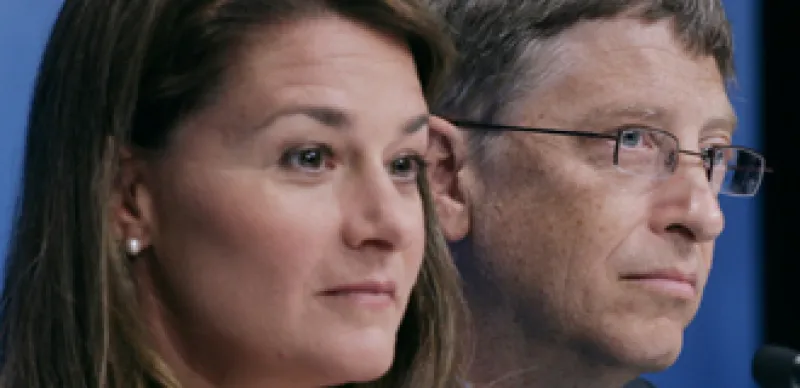A number of hedge fund managers are joining other wealthy families who have pledged to give a majority of their wealth to charity. The over-riding question is: Are hedge fund managers more or less generous than your average multi-billionaire, given their numbers?
“Giving Pledge,” the brainchild of Warren Buffett and Bill and Melinda Gates, announced that 17 more families took the pledge, bringing the total to 57 families. The original 40 were announced in August. And six of the 57, or more than 10 percent of the entire group, are hedge fund managers. The newest additions are Lee Cooperman of Omega Advisors and his wife Toby, and Carl Icahn.
They join four other hedge fund managers, who were among the original group: Tiger Management’s Julian Robertson, Jr.; Renaissance Technologies’ Jim Simons; Farallon Capital Management’s Tom Steyer and Centaurus Energy’s John Arnold. Teddy Forstmann, founder of private equity firm Forstmann Little, is also a new pledger. This is an impressive initial group. But, there are probably a few dozen aging billionaire hedge fund managers who are nearing retirement, or retirement age.
You would think there would be triple or quadruple the number taking the pledge. We’ll be watching for them. Others have given away large sums already. Last year hedge fund managers accounted for six of the top 36 givers on The Chronicle of Philanthropy’s annual list of the 50 largest donors. The top-50 list was led by Duquesne Capital’s Stanley Druckenmiller and wife Fiona, who pledged $705 million to their Druckenmiller Foundation.
The money will be used for medical research, education, and efforts to fight poverty, according to the publication. George Soros, a longtime generous giver to social and political causes, ranked sixth after giving $150 million, including $100-million to his newly established Fund for Policy Reform to support advocacy related to climate change. Another $50 million is being given to Central European University, in his native Budapest, Hungary.
Soros earlier helped to establish the university, The Chronicle notes. The money will be used to establish the Institute for New Economic Thinking. Meanwhile, earlier this year Bill Ackman's Pershing Square Foundation donated $25 million to help match Facebook founder Mark Zuckerberg's $100 million gift to the Newark public schools.
These are all pretty impressive causes. Here’s the interesting issue, however. Many hedge fund managers — and other donors — like to give huge sums to museums, hospitals, medical centers, universities. Not exactly causes that aid the have-nots, who are being targeted by the deficit police (but ironically, not eliminating tax cuts for the billionaire donor set).
So, for example, last year Robertson and his wife Josie gave $66.1 million to the Auckland Art Gallery in New Zealand, where they live roughly half the year and have developed golf courses and other businesses. Steyer gave $40 million to Stanford University and Mark W. Yusko, founder of Morgan Creek Capital Management, and Stacey Miller gave $35 million to Notre Dame University. John Paulson, who has made $8 billion in the last three years, agreed to give $25 million last year, including $20 million to New York University's Leonard N. Stern School of Business.
Earlier this year Columbia Business School announced KKR co-founder Henry R. Kravis, a 1969 graduate, pledged $100 million. The gift--the largest in the school's history — will be used to support the construction of the Business School's new facilities. One of the Business School's two new buildings will be named The Henry R. Kravis Building.
Also this year, Stony Brook University announced that Glenn Dubin, co-founder of Highbridge Capital Management and 1978 alum, is making a $4.3 million donation to the university’s Athletic Department to help complete a new strength and conditioning facility. George Weiss, a very secretive hedge fund manager, pledged $20 million to the University of Pennsylvania. This year, Dubin also donated $5 million to The Harvard Kennedy School of Government to launch a graduate fellowship fund to support and develop new programs for emerging leaders from the United States and around the world. Most of these colleges — except Stony Brook — are private colleges that charge among the highest tuition rates.
There is no indication this money is being used to hold down overall tuition costs for anyone who chooses to attend. I must admit this kind of giving over the years has never impressed me much. I always wondered why so much money is given to alma maters (well, actually, they get to immortalize themselves), Lincoln Center, Carnegie Hall and the same small group of hospitals. Why not give to smaller, financially struggling hospitals and their cash-strapped emergency rooms in areas where they are the only medical facility? Why not encourage starving artists, musicians or innovators with a great idea but little means to pursue their mission?
To give him credit, Dubin previously donated $1 million to Stony Brook in 2005 to create the Glenn Dubin Endowed Scholarship Fund, offering scholarships to students from the Washington Heights section of New York City, particularly to students from P.S. 132, where he attended elementary school.
Today, the inner city neighborhood is mostly comprised of Hispanics. And several years ago, Dubin and his wife Dr. Eva Andersson-Dubin, pledged $15 million to The Campaign for Mount Sinai to create The Eva and Glenn Dubin Breast Care Center at Mount Sinai. Nice cause at a high profile hospital.
Of course, others who don’t qualify for the ranking are still well noted for their generosity. They include Paul Tudor Jones II, who started the Robin Hood Foundation and is a big supporter of inner city schools and is a big advocate of charter schools. And many other hedge fund managers have created foundations that give away millions of dollars each year.
However, these foundations typically have smaller sums than one would have thought, given the creator’s wealth. Even so, does all this suggest billionaire hedge fund managers are chintzy? No. Actually, we really don’t know. Maria DiMento, who puts together the Chronicle’s top-50 list and therefore the most qualified to know, concedes it is hard to judge. “They are private about everything,” she says. “They are so used to keeping everything under tight wraps, by habit they don’t publicize giving.” She also says that sadly, it is accepted wisdom in the philanthropy world that those large institutions — hospitals, universities, museums — are better and more experienced at handling very large gifts. So, donors feel safer giving $50 million to $100 million to a hospital or university than $5 million to a human services group.
But, she also concedes: “They may be giving smaller gifts but not telling us.” This is true. For example, Appaloosa’s David Tepper gave money to soup kitchens, pantries and food banks in New Jersey and his native Pittsburgh in the past two years as the economy crumbled from the financial crisis. We don’t know how much he spent and none of this is reported. Baupost’s Seth Klarman gives away most of his money to the Klarman Family Foundation, which his wife Beth runs, or to individual charities, except for an undisclosed sum squirreled away for his three children. His foundation gives out considerably more than the standard 5 percent each year, focusing on alleviating poverty and improving education in the inner city.
He also gives money to health care and science causes; he has created an eating disorders center and a funding program for scientific grants in the field of eating disorders. Klarman, who is Jewish, also gives money to causes such as Boston ’s Combined Jewish Philanthropies. Says DiMento: “I wish they would come forward and publicize their gifts.” It could also help their image in Congress, which likes to demonize hedge fund managers even though they did not play a role in the financial crisis.
The best solution: Take the Buffett/Gates pledge. It is big, high profile, and tied to two individuals they can trust. Are they listening?







